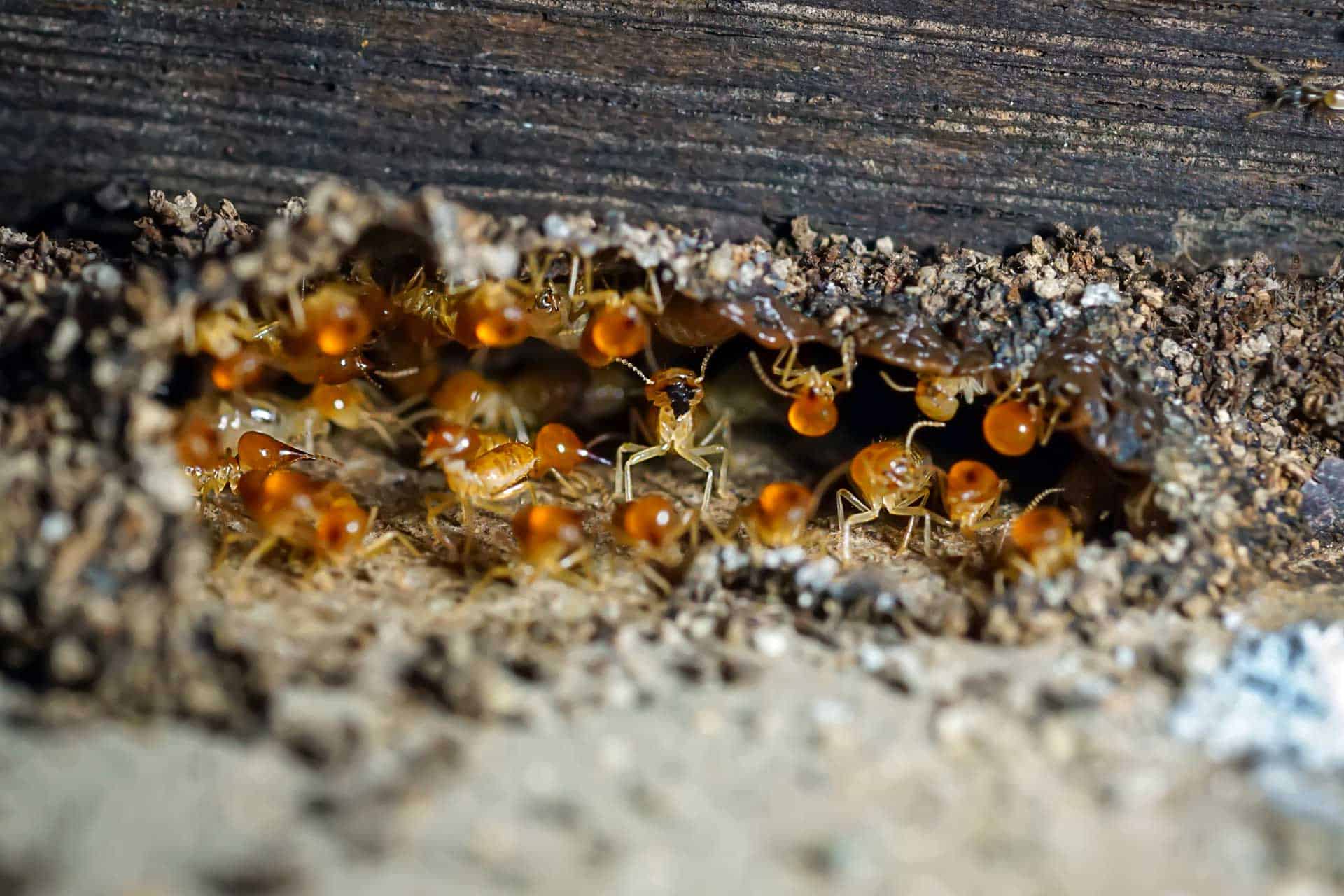Is Tenting the Best Way to Remove Termites?
 Termite tenting is an old and well-established method of removing drywood termites from a building. Although over the years the chemicals used in the process have evolved to become both, more effective in removing the termites and also safer for humans and animals as well as more environmentally friendly, the basic procedure remains the same.
Termite tenting is an old and well-established method of removing drywood termites from a building. Although over the years the chemicals used in the process have evolved to become both, more effective in removing the termites and also safer for humans and animals as well as more environmentally friendly, the basic procedure remains the same.
What Is Tenting?
Fumigation is a termite treatment that fills the interior of a building with specially created poisonous gasses that will kill any termites that may be within the structure. The process involves completely covering a house with a tent (or tents) normally made of PVC-coated canvas or plastic to seal off the interior of the home. Gases to kill the termites are then pumped into the tent(s). The tenting ensures that the concentration of gases is not diluted and the toxic gases do not escape into the atmosphere. The period of tenting will depend on various factors including the size of the house, the extent of the infestation, the ambient weather conditions, and so on. The duration can range from hours to days. The building cannot be occupied during that time.
Once the termite removal company determines that all the termites within the structure have been killed, the tent will be removed and the building fully ventilated to remove any toxic residue. Once the professionals find that the building is safe to occupy, the residents will be allowed to re-enter.
It is vital to emphasize that tenting involves dealing with toxic and hazardous substances and should only be done by qualified professional termite removal services. DIY efforts will not only be ineffective but are also dangerous.
How Effective Is It?
Although other methods of termite removal have been developed and are very effective, tenting remains the bedrock of termite treatment. It is normally the first choice of termite control companies and they apply other methods when tenting is not a viable or practical option.
The Advantages of Termite Tenting:
- Fumigation is highly effective and has a very high success rate – it usually removes all the termites in the structure.
- It does require the occupants to stay away from the house until the procedure is complete, but that is only to ensure that the residents, both humans and animals, are not affected by the fumigation.
- The gases pumped into the house during fumigation can reach even the most difficult-to-access nooks and crannies.
- The fumigation gasses may also eliminate other pests that may be present in the house, but which may not have been noticed by the occupants.
- Although not connected to the termite treatment, an ancillary advantage is that this allows homeowners to clean up their homes and get rid of accumulated junk.
The Disadvantages of Termite Tenting:
- The family is forced to move out and find alternative accommodation during the termite tenting process.
- Tenting kills all the termites in a building, but it is not a preventive measure. Other actions will have to be taken to prevent future infestations.
Also Read: How to Remove Termites from Your Home | Subterranean Termite Treatment
If you have a termite problem in your home, tenting may be the best way to get rid of it completely. The right way to get started on fixing a termite problem is to contact a professional termite removal service that will survey the house, determine the extent and type of infestation and then advise if tenting or another termite treatment option will produce the best results. Once the termite infestation has been removed, the company will be able to offer termite prevention services to prevent the problem from recurring in the future.
- Jul 26, 2023
